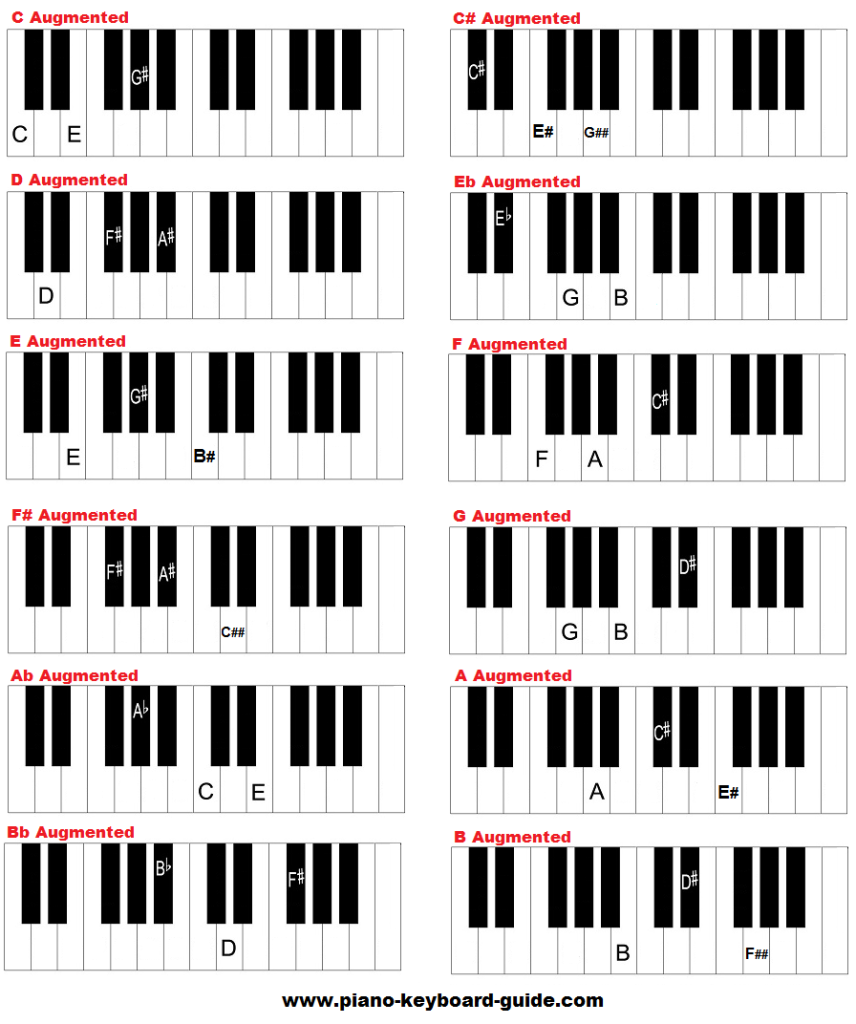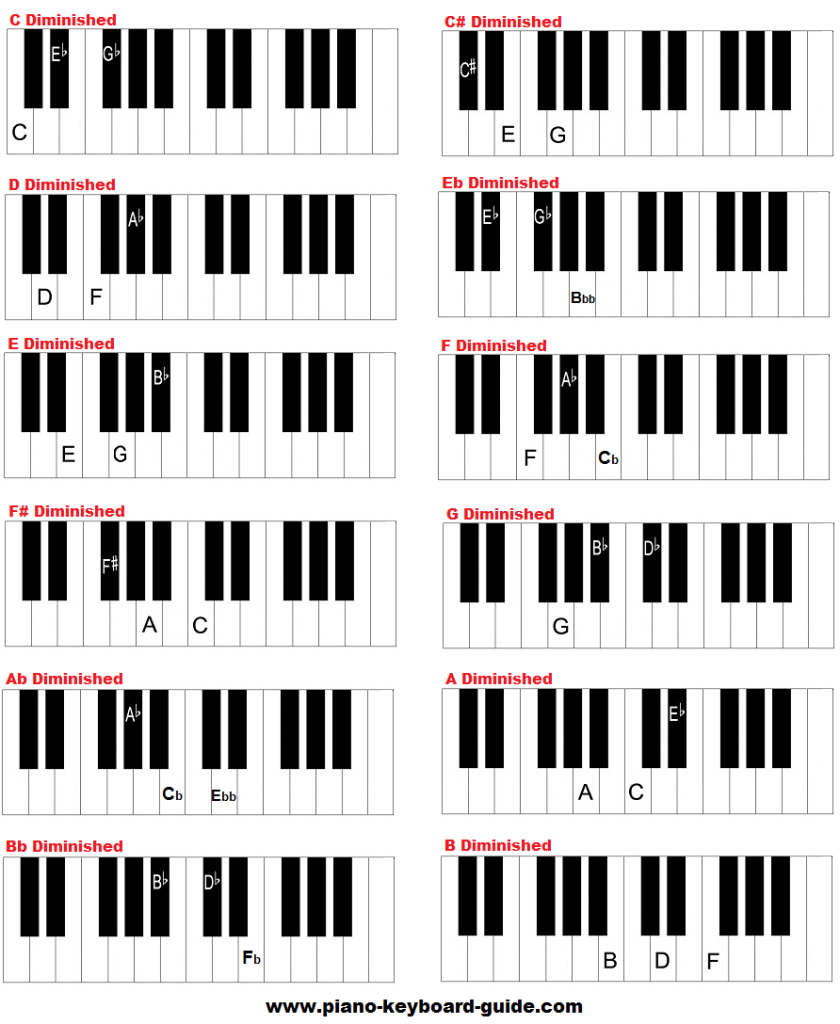The following lesson, Learn 10 Types Of Piano Chords Fast In 1 Easy Lesson, is based on a video lesson. I’ve put it in text format as well for your convenience, and you can also watch the embedded video below.
I’d like to welcome you to another piano lesson. In this lesson we will take a look at ten different types of chords. These are chords that you should absolutely know. We will start with major chords, then move to minor, diminished, augmented, suspended 2nd, suspended 4th, dominant 7th, major 7th, minor 7th, and major 6th chords.
I will simplify this. This topic is often presented with difficulty, but I’m going to make it very easy for you. I will do this in the key of C major. I will show you how easy it is to form these ten types of chords. No hassle. No stress.
Let’s learn how to play ten types of chords and we will do it easily and quickly. First of all, we will start with the C major scale. The notes of the C major scale are C D E F G A B. C is note 1, D is note 2, E is note 3, F is note 4, G is note 5, A is note 6 and B is note 7. To form chords, you start with the major scale.
Video: Learn 10 Types Of Piano Chords Fast In 1 Easy Lesson
We will mainly use the C major scale for this lesson but you can form chords using any major scale. For instance, you can start with the F major scale, F G A Bb C D E, or the G major scale, G A B C D E F#. As long as you know your major scale, you can use the formulas we will take a look at in a while to form your chords.
The first chord we will start with is the C major chord. Remember we’re using the C major scale. The notes of the C major chord are C-E-G. I’m using notes 1, 3 and 5 of the major scale to form the major chord. C is note 1, E is note 3, and G is note 5 of the major scale.
The next chord you will learn is the C minor chord. I’m using notes 1, the flatted third (flat 3) and 5 of the major scale. The notes are C, Eb (E flat) and G. So instead of playing the third, I’m playing the flatted third. In other words, I am playing the middle note a half step lower. So instead of C-E-G (1-3-5), I’m playing C-Eb-G (1-b3-5).
By the way, to take your piano playing to the next level, click here to learn about the Piano For All piano course. This course will help you play better.
We already know how to play two types of piano chords, the major and the minor chord. We now move to the diminished chord. To form this chord, you play the first note of the scale (or the root), the flatted third and the flatted fifth. The notes of C diminished are C, Eb and Gb. The formula is 1-b3-b5. E is the third and Eb is the flatted third. G is the 5th and Gb is the flatted fifth.
The next chord you will learn is the augmented chord. To form an augmented chord, you play notes 1, 3 and #5. The notes of the C augmented chord are C, E and G# (G sharp). G is the fifth and G# is the sharp fifth. It’s as simple as that.
You now know how to play four different types of chords, namely, major (1-3-5), minor (1-b3-5), diminished (1-b3-b5) and augmented (1-3-#5). In terms of notes, it’s C major (C-E-G), C minor (C-Eb-G), C diminished (C-Eb-Gb) and C augmented (C-E-G#).
We could have formed piano chords (keyboard chords) using the F major scale, F G A Bb C D E. So using the formula, 1-3-5, the notes of the F major chord are F-A-C. Using the formula, 1-b3-5, the notes of the F minor chord are F-Ab-C. To form Fdim, use the formula 1-b3-b5; these gives us the notes, F, Ab and Cb. To form Faug, use the formula, 1-3-#5, and this results in the notes, F, A and C#.
Let’s form these four types of chords using the G major scale, G A B C D E F#. Notes 1, 3 and 5 of the G major scale are G, B and D; this is a G major chord. To form G minor, play notes 1, b3 and 5 or G, Bb and D. To form G diminished, play notes 1, b3 and b5, or G, Bb and Db. To form G augmented, play notes 1, 3 and #5 or G, B and D#. It’s as simple as that.
We will now take a look at two types of suspended chords They are suspended 2nd (sus2) and suspended 4th (sus4) chords. Let’s go back to the C major scale. C, D and G played together is a C suspended chord (Csus2 chord). C is note 1, D is note 2 and G is note 5. The formula is 1-2-5. Move from a Csus2 chord to a C major chord to hear how beautiful it sounds.
On the other hand, C, F and G played together is a C suspended 4th (Csus4) chord. You play notes 1, 4 and 5 of the major scale. C is note 1, F is note 4 and G is note 5.
Let’s form suspended chords using the F major scale. To form an Fsus2 chord, play F, G and C. F is note 1, G is note 2 and C is note 5 of the scale. To form an Fsus4 chord, play F, Bb and C. How about the G major scale? For Gsus2, the notes are G, A and D. For Gsus4, the notes are G, C and D. Remember that it’s 1-2-5 for a suspended second chord and 1-4-5 for a suspended fourth chord.
The next chord you will learn is the dominant 7th chord. The notes of the Cdom7 (C dominant 7th) chord are C, E, G and Bb. The formula is 1-3-5-b7. The flatted 7th is Bb. Not B, but B flat. B is the 7th and Bb is the flatted 7th. B flat is one half step lower than B.
Let’s take a look at another type of chord, the major 7th chord. To form a major 7th (maj7) chord, play notes 1, 3, 5 and 7 of the major scale (1-3-5-7). The notes of the Cmaj7 chord are therefore C-E-G-B. Clearly, C is note 1, E is note 3, G is note 5 and B is note 7 of the major scale. For an F major 7th chord, the notes are F-A-C-E. For a G major chord, the note are G-B-D-F#.
You will now learn how to play a minor 7th (m7) chord. To form a min7 chord, play notes 1, b3, 5 and b7 of the major scale. The formula is 1-b3-5-b7. For a Cmin7 chord, the notes are C-Eb-G-Bb. This chord is really a minor chord plus the flatted 7th. For Fm7, it’s F-Ab-C-Eb. For Gm7, it’s G-Bb-D-F.
The last type of chord we will learn is the major 6th chord. Play notes 1, 3, 5 and 6 (1-3-5-6). Therefore, C-E-G-A is a C6 chord, F-A-C-D is an F6 chord and G-B-D-E is a G6 chord. You play the root, the third, the fifth and the sixth of the major scale.
I want you to practice these ten types of chords (major, minor, diminished, augmented, sus2, sus4, dom7, maj7, min7 and maj6) in different scales. Use this lesson as a foundation to practice forming chords in different scales.
To take your piano playing to the next level, click here to learn about the Piano For All piano course. I highly recommend it. There’s a lot on piano chords in this course that will really help you play better. My name is Mantius Cazaubon. All the best!
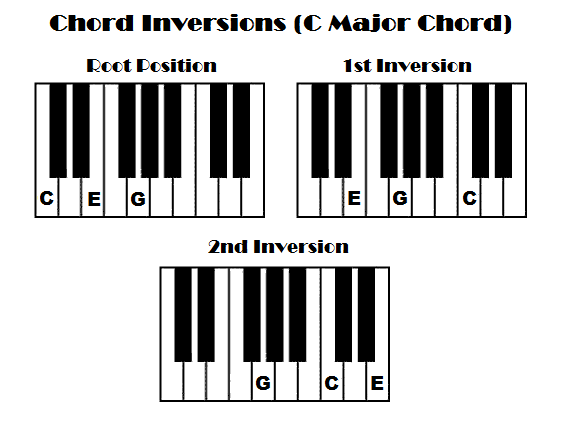

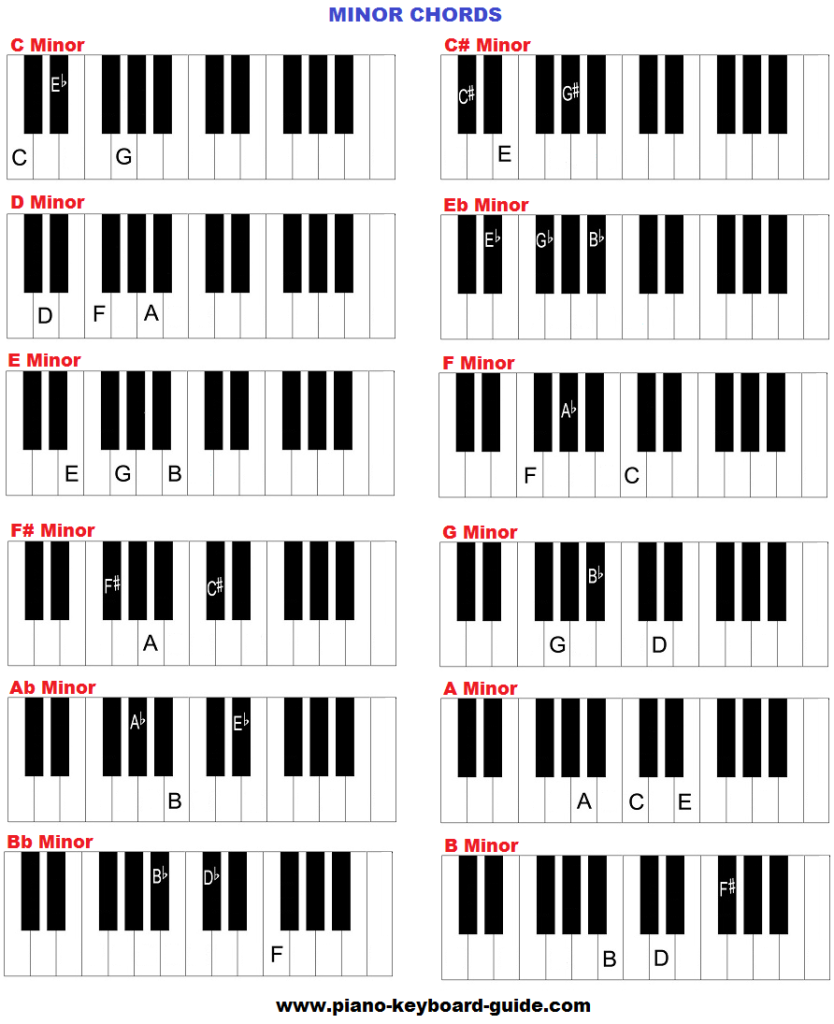
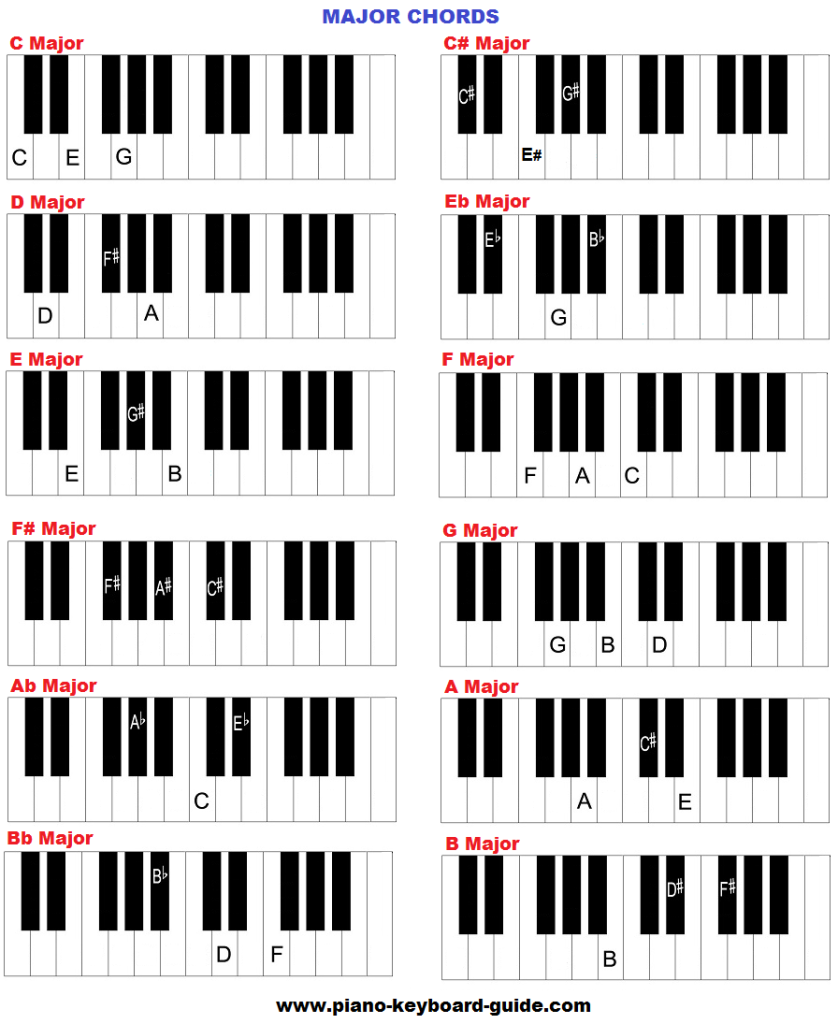 Major Chords List:
Major Chords List: